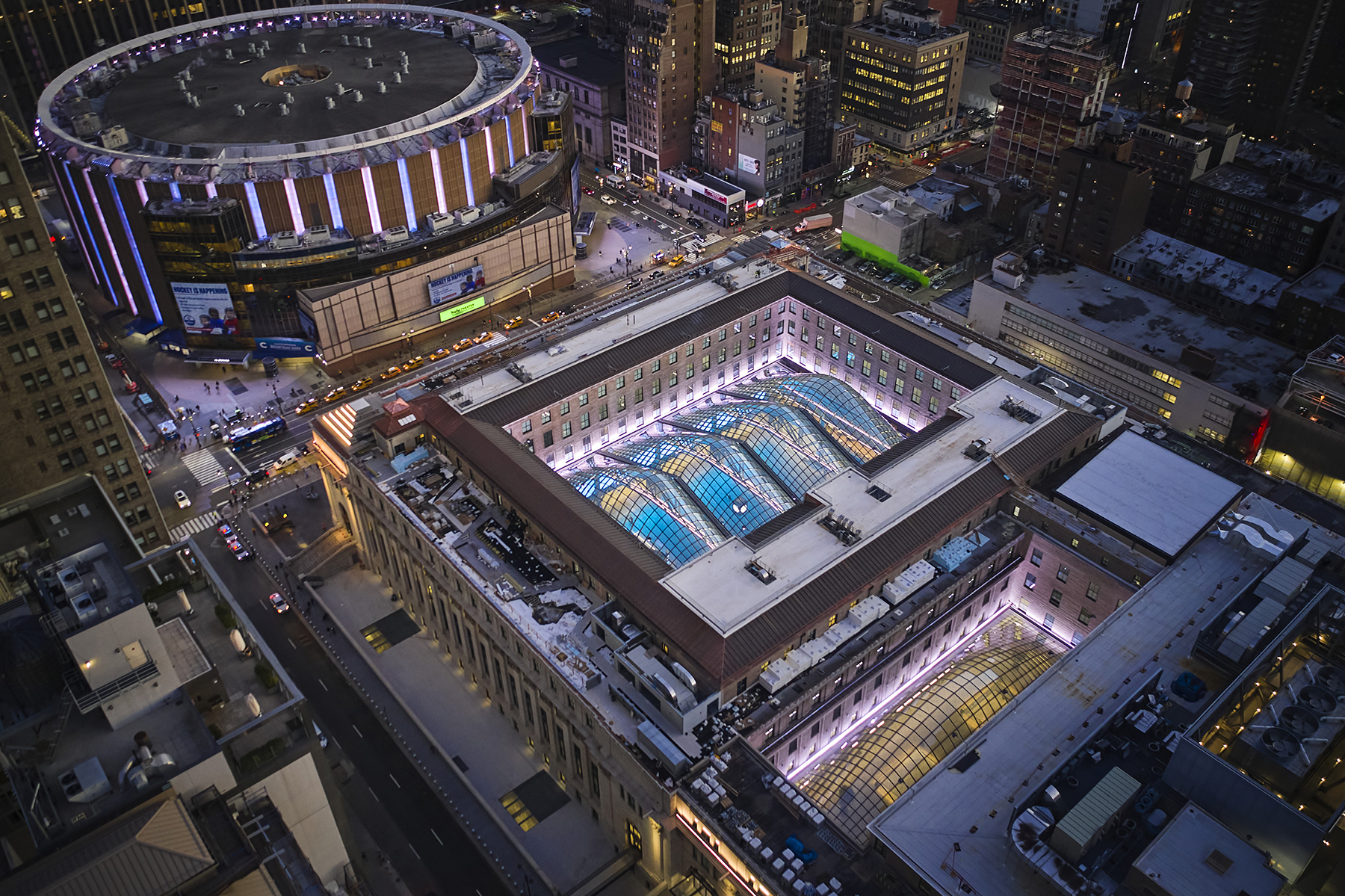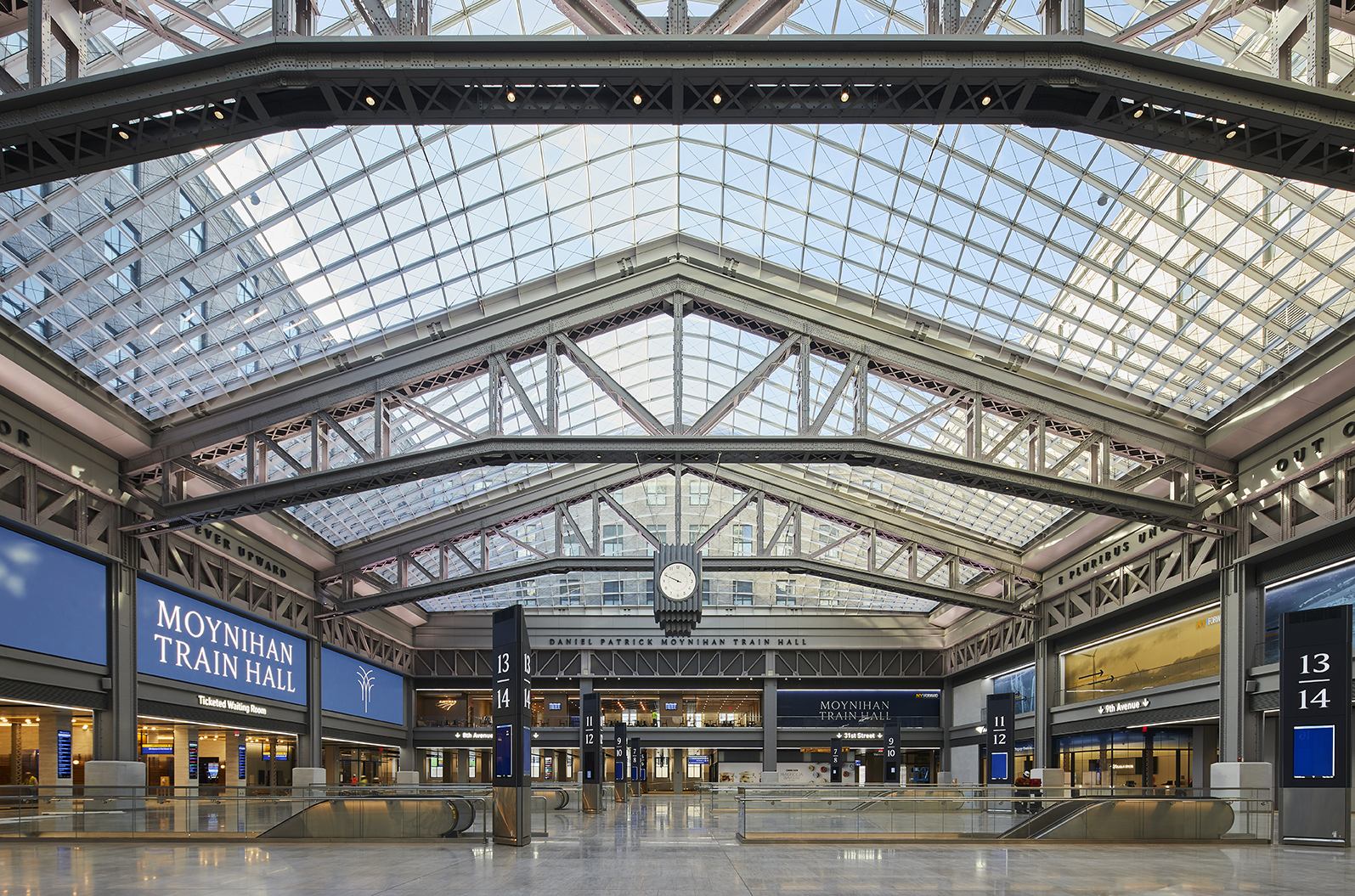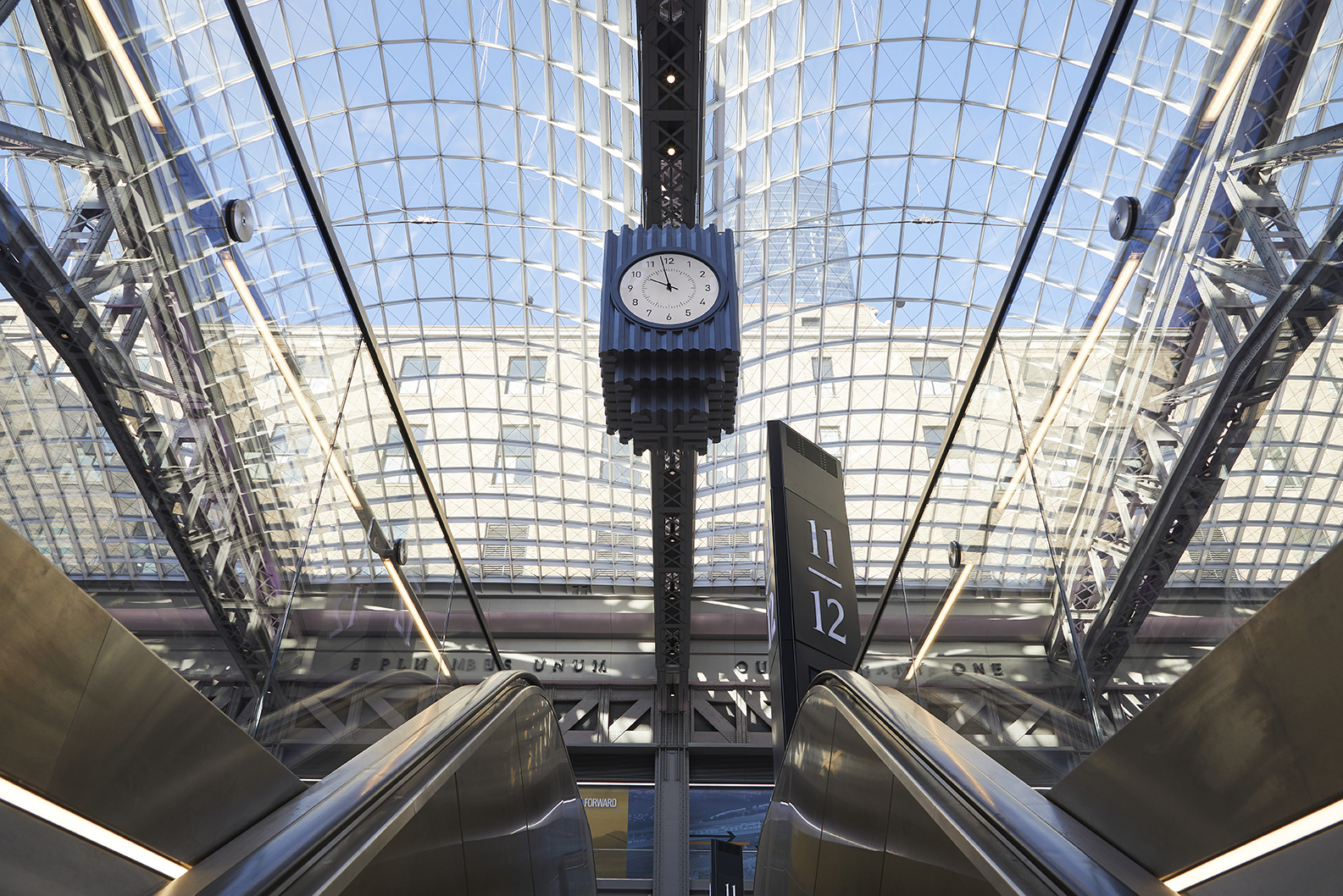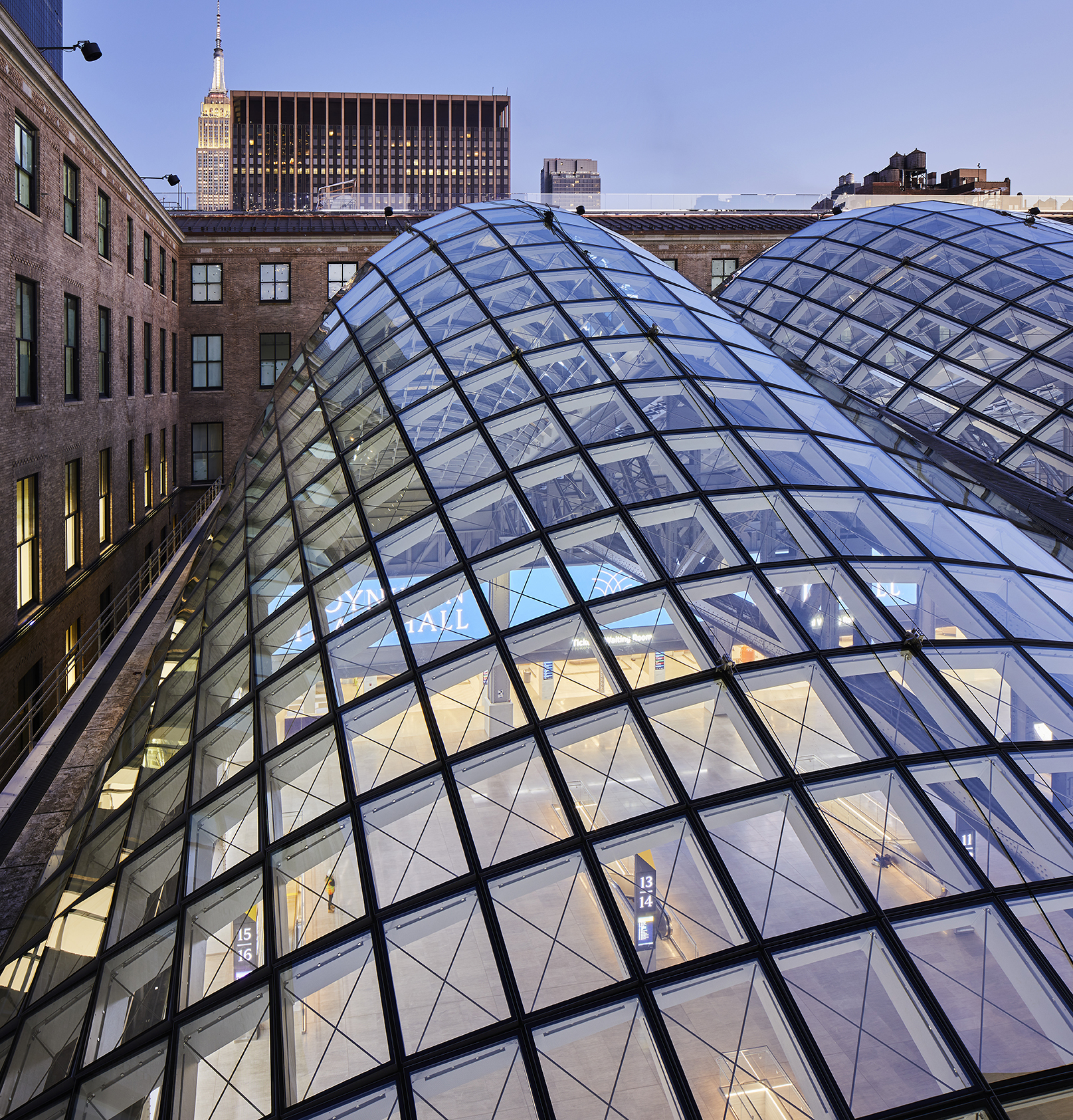On Jan. 1, the next phase in an estimated $2.5-billion expansion of New York City’s Pennsylvania Station complex, located in midtown Manhattan, opened to the public. The new Moynihan Train Hall was constructed within the historical James A. Farley Post Office Building, across from Penn Station and directly above many of the station’s existing platforms and tracks.
Demolished masterpiece
The 486,000 sq ft space creates a new “grand entrance” for rail passengers arriving in New York, more than 50 years after the demolition of the original Penn Station, notes Brian A. Falconer, P.E., S.E., SECB, M.ASCE, a principal of Severud Associates Consulting Engineers P.C.
Severud has been the structural engineer for the Moynihan Train Hall project for more than 17 years. Skidmore, Owings & Merrill completed the architectural design of the new hall, while schlaich bergermann partner engineered a series of giant gridshell skylights that now top the space.

The original Penn Station was a “skylit, beaux-arts masterpiece” designed by the architecture firm McKim, Mead & White in 1910. The same firm designed the Farley Building across the street in 1913, which “echoed” some of the aesthetics of the original Penn Station, according to a Dec. 30, 2020, press release about the Moynihan Train Hall from SOM.
After the original Penn Station was demolished during the mid-1960s, only its underground platforms and concourses remained. The loss of Penn Station, however, served as “a major catalyst” in the creation of the landmarks and preservation movement to preserve historic buildings in New York City and across the country, says Falconer.
The Farley Building was designated a New York City landmark in 1966, though by the 1970s the facility had become 95 percent vacant when the post office moved most of its operations elsewhere.
Expansion plans
Plans to expand Penn Station into the Farley Building started in the early 1990s, championed by Daniel Patrick Moynihan, New York’s longtime U.S. Senator who died in 2003. By 2004, Severud’s engineers started working to make themselves familiar with the Farley Building’s existing structure, reviewing old documents and drawings, performing thousands of hours of visual surveys, and studying the results of extensive material testing.

Eventually, a three-phase redevelopment project was launched. The first phase opened in June 2017 and involved the construction of a new underground concourse, called the West End Concourse, to link what remained of Penn Station to the planned Moynihan Train Hall. The second phase included the hall itself, which was designated for the Farley Building’s long-dormant mail sorting room. A third phase, which will likely be completed in late 2021, will redevelop the remaining portions of the Farley Building. New York Gov. Andrew Cuomo also recently proposed a plan to connect the city’s High Line elevated park to a site adjacent to the train hall.
Measuring 150 ft wide by 200 ft long, the mail sorting room’s size and central location “made it a natural candidate for repurposing as a new train hall,” says Falconer.

The existing floor of the mail sorting room was located one level higher than the planned concourse level, so the existing framing was removed to increase the height of the train hall by 20 ft, taking it to a lofty 92 ft, Falconer says. This also reduced the gravity loads on the existing framing of the concourse level, which acts as a transfer system to span over the train tracks below.
This reduction of load allowed half of the hall’s transfer girders to be cut and reframed to create openings for escalators to extend down to the belowground platforms without the need to install significant girder, column, or footing reinforcement within the train shed. Twelve new escalators now extend from the train hall floor to seven platforms providing access to 14 tracks, Falconer notes.
Trio of trusses
The design of the train hall’s new roof went through multiple iterations. Ultimately, the design team decided to reuse three original 150 ft long steel trusses that featured latticed members reminiscent of the original Penn Station, Falconer says.
Although these trusses had sufficient capacity to carry a new roof, the design called for the installation of four pillowy skylights, each 50 ft by 150 ft, on top of the trusses. As a result, all framing between the trusses had to be removed, making the gabled top chords unbraced for their full span. To rectify this, the design added a 36 in. wide by 24 in. deep steel box beam along the top chord of each truss to restore lateral support and provide seats for the skylights, Falconer explains.

The gridshell design of the skylights features larger panels toward the center of the shells to enable more light to enter the space below. The depths of the steel members decrease toward the middle “to efficiently carry the loads and increase the sense of lightness as you progress into the space,” according to a schlaich bergermann partner website on the project. Diagonal cables within the plane of the roof surface brace the steel gridshell structure, explains schlaich bergermann partner, while the barrels of the shells are braced by a series of diagonal spider cables.
A skylight was also installed above a passageway between two ceiling murals at the Farley Building’s entrances from 31st and 33rd streets.
The redevelopment of the Farley Building created a 21st-century transportation hub that features the expansive new train hall, more than 1 million sq ft of commercial space, state-of-the-art wayfinding, and other amenities designed to improve each visitor’s experience, Falconer concludes.
Project credits:
Client: Empire State Development in a public-private partnership with Vornado Realty Trust, The Related Companies, Skanska, the Metropolitan Transit Authority, Amtrak, and the Port Authority of New York and New Jersey
Architect: Skidmore, Owings & Merrill
Structural engineering: Severud Associates Consulting Engineers P.C.
Skylight structural engineering: schlaich bergermann partner
Civil/geotechnical engineering: Langan Engineering & Environmental Services Inc.
Historic building restoration: Building Conservation Associates Inc.
Rail engineering: Systra Consulting Inc.




